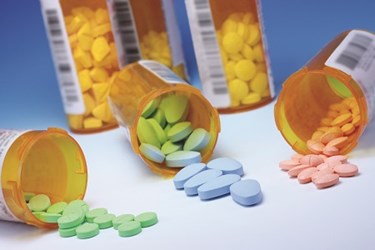Can These 3 Anti-Counterfeiting Methods Protect Pharma's Supply Chain?
By Anna Rose Welch, Editorial & Community Director, Advancing RNA

Politico recently published an article about the “rogue pharmaceutical industry,” citing stats from the World Health Organization that 8 percent of bulk drugs imported into the U.S. are unapproved, counterfeit, or substandard. Counterfeit drugs account for $21 billion, or 10 percent of global pharmaceutical commerce.
The Drug Quality and Security Act (DQSA) is on the minds of many these days as companies make the necessary investments and launch initiatives to ensure regulatory compliance and supply chain integrity. However, I’ve also been taking note of some of the ways companies and researchers in the industry have been trying to protect pharma products from counterfeiters and keep patients from being fooled by counterfeiters’ increasingly sophisticated tricks.
Here are several different projects I’ve come across that industry has been exploring as of late in order to battle counterfeiting:
-
In December, EMD Serono announced it had launched a smartphone app called “Check My Meds” that patients could use to scan their prescription drugs to ensure their legitimacy. This reminds me of an app developed in Egypt that made headlines last summer that functioned in the same way as Merck’s app. According to Pharmaceutical International, this app piqued the interest of Big Pharma as well, with Sanofi and Roche exploring if and how the app could be adopted outside of Egypt.
A similar initiative was also launched last November to determine if antimalarials being used in sub-Saharan Africa were up to par. (According to Securing Industry, antimalarials, containing artesunate, have become the most commonly counterfeited drug.) In order to fight the proliferation of fake antimalarials, which cause nearly 20 percent of the 1 million malaria-caused deaths, the U.S. government developed a lab test that used color to separate the real from the fake. After the drug has been on the test kit for five minutes, a smartphone camera coupled with an app called “ColorAssist” is used to detect the drug’s color/concentration.
I’m interested to see what else can/is being done with apps in the pharma industry. I recently wrote a blog for Pharmaceutical Online’s sister publication, Clinical Leader, in which I discuss some of pharma’s efforts to provide patients with apps. A majority of these apps are meant to be treatment companions or sources of information for patients to turn to in order to learn more about their illnesses. However, as the examples referenced here prove, the app could be an easily-acquired, user-friendly tool patients could use to determine the safety of their medicines. I’d also argue the use of apps for counterfeit detection would be a key step for pharma to take to bring about a more transparent and patient-centric industry.
-
Researchers at the University of Mississippi made headlines last summer for their work on a new kind of label that, when breathed upon, reveals a secret image. The researchers have created labels featuring miniscule indentations on the surface that are 500 times smaller than the width of a piece of human hair. When moisture from breath settles in the indentations, an image forms and can be used to differentiate real from fake packaging. According to Mashable, this new technology was inspired by holography-based security tags that are often placed on counterfeit purses and shoes. Because these new nanoscale-layered labels are difficult to replicate, the university believes it would be a good tool for the pharmaceutical industry to integrate into its packaging to help identify counterfeits.
- Researchers at Carnegie Mellon are at work on a unique, edible radio-frequency tagging system, the Pittsburgh Post-Gazette reported recently. This system would be integrated into the pill and given a code to help prove authenticity. One of the lead researchers, L. Carley, likens this new system to a grain of salt. It’s “a fraction of a millimeter. You could swallow that. It wouldn’t do anything to you.”
While RFID is not a new concept for any industry, including pharma which already uses it on packaging to track drugs through the supply chain, the technology has not been part of the pills themselves. Because of this, the researchers are currently faced with the challenge of embedding an encrypted ID tag into each pill that would only be readable to those with the right device to unlock the code. The ID tag would need to be unique for each separate pill to keep counterfeiters from just taking a drug’s serial number and crafting their own RFID tags. This ID tag is also being designed to tell pharmacists where and when the drug has been made. The researchers anticipate that this technology, though applicable to any drug, would be more popular for drugs that are more expensive and most often targeted by counterfeiters for the black market.
These are just a few examples of the work being done in the anti-counterfeiting space as of late. Who knows what else the industry will come up with — but from these examples (especially the last two), I’m excited to see what other ways the industry will prove its creativity in an effort to keep its drugs and patients safe.
